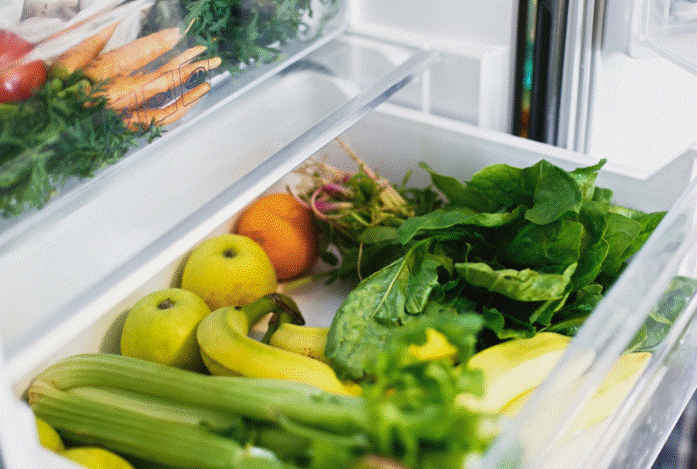Yoga Diet
A healthy eating plan is a vital part of every weight-loss journey. Packing your diet with fresh, nutritious foods helps fuel your body for exercise while helping to crowd out unhealthy choices.
In this article, you’ll learn the yoga diet principles that can help cleanse your body, aid weight loss, and give you more, energy to practice yoga every day.
Learn how to beat food cravings and improve your digestion by being a mindful eater; discover the foods you should eat and avoid bringing your body back into balance.
Yogis claim that the yoga diet is an integral part of the yoga lifestyle. While there are no strict rules, a yogic diet loosely follows the principles of Ayurveda, the ancient Indian system of healing.
By eating in line with your body and the rhythms of nature, it’s believed you can boost your energy, cleanse your body, clear your mind and bring your body to its natural weight.
Once you start to explore the connections between your mind, body, and spirit, you begin to gravitate towards a type of diet that gives you nourishment, energy, lightness, and flexibility, says naturopath Kimberly Parsons, author of The Yoga Kitchen Plan (Quadrille).
Here are the steps to follow in Yoga Diet
-
Eat early
Try to ensure you leave two hours in between eating a meal and doing your yoga practice. That allows you to completely digest your food, freeing up your energy to help you perform the posture correctly and boosting the body benefits.
It also means you can take time to eat slowly and appreciate your food. Always eat at least two hours before you go to bed.
If your body is still digesting when you go to sleep, it can’t direct energy into overnight repair.’
2. Pick plant-based
The traditional yogic diet is vegetarian. Not only is this out of respect for living beings but it’s also thought that too much animal protein can cause inflammation in the body.
A yoga diet is based around vegetables, pulses (such as lentils), and legumes (such as beans), plus moderate amounts of dairy (such as milk, yogurt, and butter)
‘Yogic foods such as fruits and veg, nuts and whole grains are known as sattvic which means ”pure essence”,’ says Parsons.
‘They are considered abundant in ‘prana,’ the universal life force that gives energy to all beings.’
You don’t need to stop eating meat or fish but try to base your meals around plant-based ingredients.
This will keep you full, sustain your energy and ensure you get all the nutrients you need
to protect your health and keep your body in balance.
3. Go natural
Yogis avoid processed and junk food instead of piling their plates with raw or lightly cooked vegetables, pulses, whole grains, nuts, and seeds.
Processed foods are believed to have low prana or energy, leaving you
feeling sluggish and leading to weight gain.
Try to buy your food in its whole, raw state rather than relying on packaged and convenience foods.
Not only will it have taste better, but it will also have more nutrients to keep you
fuelled and feeling full.
Opt for brown bread, rice, and pasta rather than the white, cultivated varieties.
Swap processed carbohydrates for whole grains such as quinoa and buckwheat.
Start your day with oats rather than sugary, processed cereals.
4. Worship water
As with any exercise, making sure you’re properly hydrated will ensure you can get the most out of your yoga practice.
Drinking enough water will also help cleanse your body and keep you feeling full.
Hunger and thirst signals can easily get confused, so next time you’re feeling hungry, try having a drink of water first.
Yogis believe in starting each day drinking warm water. Coldwater can dampen the body’s ‘Agni or digestive fire and prana energy.
So sip water before eating rather than during a meal, and rehydrate, before and after a yoga class rather than during.
5. Avoid overeating
In keeping with the principles of balance, yogis believe you should only
eat till you are about 80 percent full.
This allows your stomach room and energy to digest and gives your body time to acknowledge that it feels full.
Rush your plate, and you are likely to eat more. Instead, try eating 80 percent of what’s on your plate and then having a rest.
Gradually you’ll get in tune with how much you really need to serve.
Foods To Eat and Avoid in Yoga Diet
EAT PLENTY
- Vegetables
- Fruits
- Wholegrains
- Pulses
- Nuts and seeds
- Fresh herbs
- Herbal teas
- Water
EAT IN MODERATION
- Dairy produce
- Fish
- Meat
- Fresh juices
- Natural fats and oils
- Spices
AVOID
- Processed foods
- High-sugar foods
- High-salt foods
- Animal fats
- Caffeine









